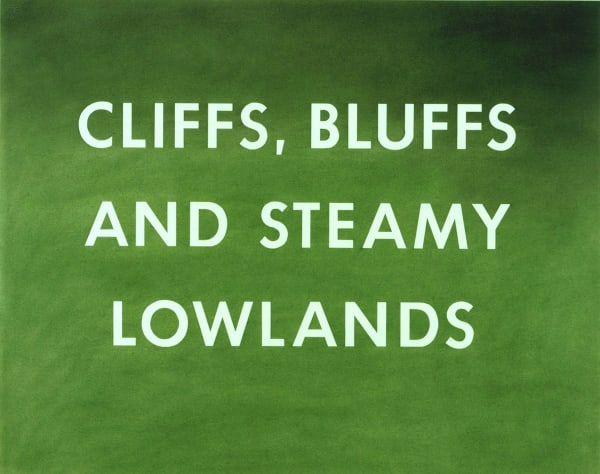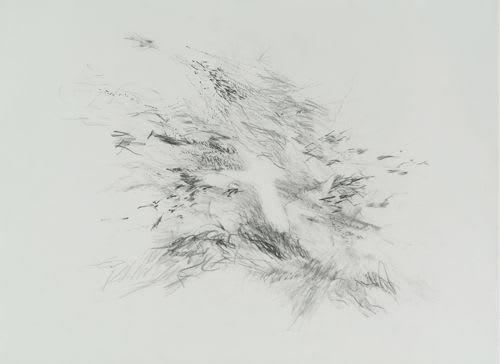Alexander Calder American, 1898-1976
-
Biography
Alexander Calder (American, 1898–1976) is known as the originator of the mobile—sculptures that allowed and incorporated movement as part of their aesthetic—Alexander Calder was born in Lawnton, Pennsylvania, the son of a sculptor. In 1923, he set aside his initial plan of becoming a mechanical engineer to enroll in the Art Students League of New York, studying briefly under Boardman Robinson and John Sloan. Calder made his first sculpture in 1925 and one year later, in 1926, he had his first exhibition of paintings at the Artist’s Gallery in New York. Shortly after the conclusion of this exhibition Calder moved to Paris and developed friendships with avant-garde artists, among them Marcel Duchamp and Fernand Léger. It was in 1931 and 1932 that Calder first began to introduce moving parts into his sculptures. These works—his most famous—represented a distinct departure from the conventional understanding of a work of art as static object. Rather than conceiving of sculpture as an immobile form or amalgamation of components, Calder welcomed his work’s engagement with currents of air. His small-scale mobiles and standing mobiles (kinetic sculptures with immobile bases) delicately balance and investigate movement while his monumental outdoor sculptures serve as iconic landmarks in cities around the globe. Two further innovative sculptural series created by Calder include the “gong” —a sound mobile containing small metallic hammers that struck the plates of the mobile when it moved—and the “tower”—a series of sculptures conceived in 1951 consisting of armatures affixed to a wall from which objects would be suspended. Calder’s influence extended beyond sculpture, as he also experimented with performance art, film, books, textile art, jewelry-making, and even domestic objects throughout the course of his lengthy career. Among his many accolades, in 1943, Calder became the youngest artist to have a retrospective exhibition at the Museum of Modern Art in New York. From the 1950s onwards, Calder was commissioned to execute a number of important public works, including ones for the New York Port Authority and for UNESCO in Paris. Calder died in November of 1976 in New York.
-
Notable Honors and Commissions
Spanish Pavilion at the Paris World’s Fair (1937)
First prize, Rohm and Haas Plexiglass Sculpture Competition (1939)
Outstanding Citizen Award, City of Philadelphia (1955)
Major commissions for the Brussels World’s Fair, the UNESCO building in Paris, and Idlewild (now JFK) Airport in New York (all 1958)
First prize at the Carnegie International Exhibition (1958)
Gold Medal, Architectural League of New York (1960)
Election to the National Institute of Arts and Letters, New York (1960)
Medal from the American Institute of Architects (1961)
Art in America Award for Outstanding Contribution to American Art (1962)
Election to the American Academy of Arts and Letters (1964)
Named Chairman of Artists for SANE (1965)
Honorary Doctor of Art, Harvard University (1966)
Honorary Doctor of Engineering, Stevens Institute of Technology (1969)
Gold Medal for Sculpture, Academy of Arts and Letters (1971)
Grand Prix National des Arts et Lettres, France (1975)
U.N. Peace Medal (1975)
Bicentennial Artist Award, Whitney Museum of American Art, New York (1976) -
Exhibitions
-

55 Years
Isn't That Long Enough? Jun 26 – Aug 14, 2025Featuring paintings, works on paper, sculpture, film, and archival ephemera from the SFMOMA Library, and SFAI archive, this ambitious exhibition showcases museum-quality works by contemporary and historical artists, illustrating Berggruen...View More -

Contemporary & Modern Masters
Mar 6 – Apr 24, 2025View More -

Looking Back: 45 Years
Oct 8 – Dec 19, 2015View More -

Paintings, Drawings, and Sculpture
Aug 6 – 28, 2010View More -

Independent Visions
American Paintings, Drawings, and Sculpture Jul 31 – Aug 31, 2009View More
-
-
Art Fairs
-

The Armory Show
New York City, New York Sep 4 – 7, 2025Berggruen Gallery is proud to participate in The Armory Show 2025. Please visit us at Booth 400 at the Javits Center in New York. Tickets...View More -

Art Basel Miami Beach
Miami Beach, Florida Dec 2 – 5, 2010John Berggruen Gallery is pleased to participate in Art Basel Miami Beach 2011, at the Miami Beach Convention Center. Please stop by our booth. We...View More -

Art Basel
Basel, Switzerland Jun 16 – 20, 2010John Berggruen Gallery is pleased to announce our participation in Art |41| Basel. Please visit us at booth is C5 in Hall 2.0 Art |41|...View More -

ADAA Art Show
New York City, New York Mar 3 – 7, 2010The annual Art Dealers Association of America's art fair in New York, the 'Art Show,' will be held at the Park Avenue Armory from Wednesday,...View More -

Art Basel
Basel, Switzerland Jun 10 – 14, 2009View More -

Art Basel Miami Beach
Miami Beach, Florida Dec 7 – 10, 2006John Berggruen Gallery is pleased to announce our participation in Art Basel Miami Beach. Please visit our booth at the Miami Beach Convention Center.View More -

Art Basel
Basel, Switzerland Jun 14 – 18, 2006John Berggruen Gallery is pleased to announce our participation in Art |37| Basel.View More -

ADAA The Art Show
New York City, New York Mar 2 – 6, 2006Berggruen Gallery is pleased to announce its participation in The Art Show organized annually by the Art Dealers Association of America (ADAA) at the Park...View More -

Art Basel
Basel, Switzerland Jun 18 – 23, 2003John Berggruen Gallery is pleased to announce our participation in Art |34| Basel.View More
-
-
Publications
-
News
-

Where Palate Meets Palette
Modern Restaurant Management | By MRM Staff November 17, 2025At Western Addition restaurants, the art on the walls is as much of a draw as the food on the plate. 'At Bobbie’s Airway Grill...Read more -

9 Great Bay Area art shows to see right now
San Francisco Standard | Sam Mondros July 11, 2025Berggruen is celebrating its 55th anniversary with a landmark exhibition tracing its legacy as a powerhouse of modern and contemporary art. The show features paintings,...Read more -

Gallery Chat: John Berggruen, Preeminent San Francisco Art Dealer for 47 Years on the New Space Near SFMOMA, San Francisco’s Contemporary Art Market and More
The Art Dealers Association of America | By Nicole Casamento June 13, 2017John Berggruen Gallery’s history is synonymous with the growth of San Francisco’s art market. Though Berggruen started his eponymous gallery with just $5,000 worth of...Read more -

Small Judd show provides just a taste of his ambition
San Francisco Chronicle | By Kenneth Baker May 13, 2006For several weeks, until its contemporary art auction Tuesday evening, Christie's had on view one of the great spring exhibitions in New York: 37 sculptures...Read more
-
-
-
Inquire
Send me more information on Alexander Calder











